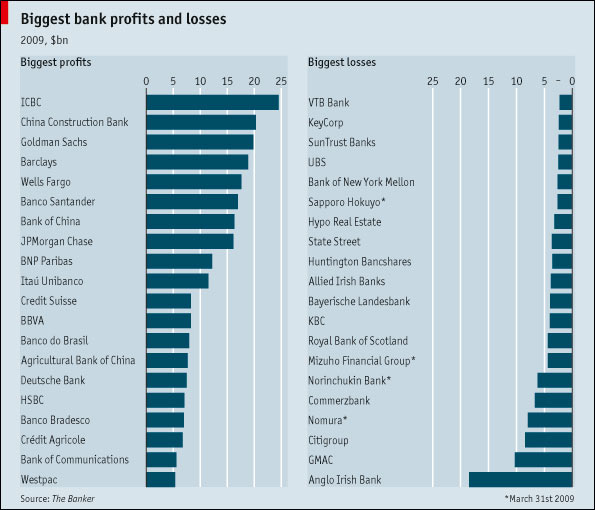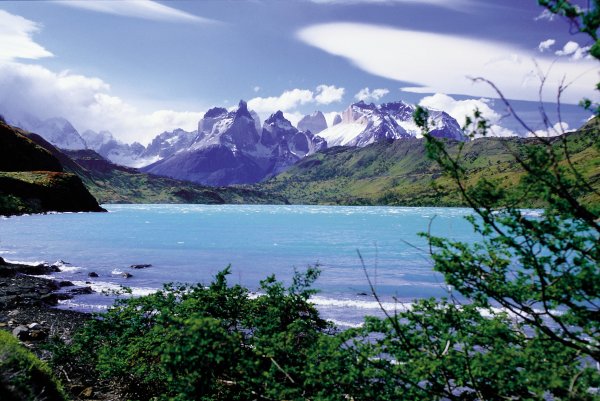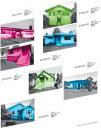Each year The Banker magazine publishes a list of the best global banks based on various factors such as profits, losses, assets, etc. The graphic below lists the best and worst banks based on 2009 data:
via The Economist
It is interesting to note that the two most profitable banks in the world are Chinese banks – ICBC and China Construction Bank(OTC: CICHY). Two other Chinese banks that are in this list include Bank of China(OTC: BACHF) and Agricultural Bank of China. The three Brazilian banks that made it to this ranking are Banco Bradesco(BBD),Itau Unibanco(ITUB) and Banco do Brasil (OTC: BDORY). Anglo Irish was the worst bank in terms of losses followed by GMAC and Citibank(C). Despite many bailouts in the developed world, European and American banks dominate the losers category.


